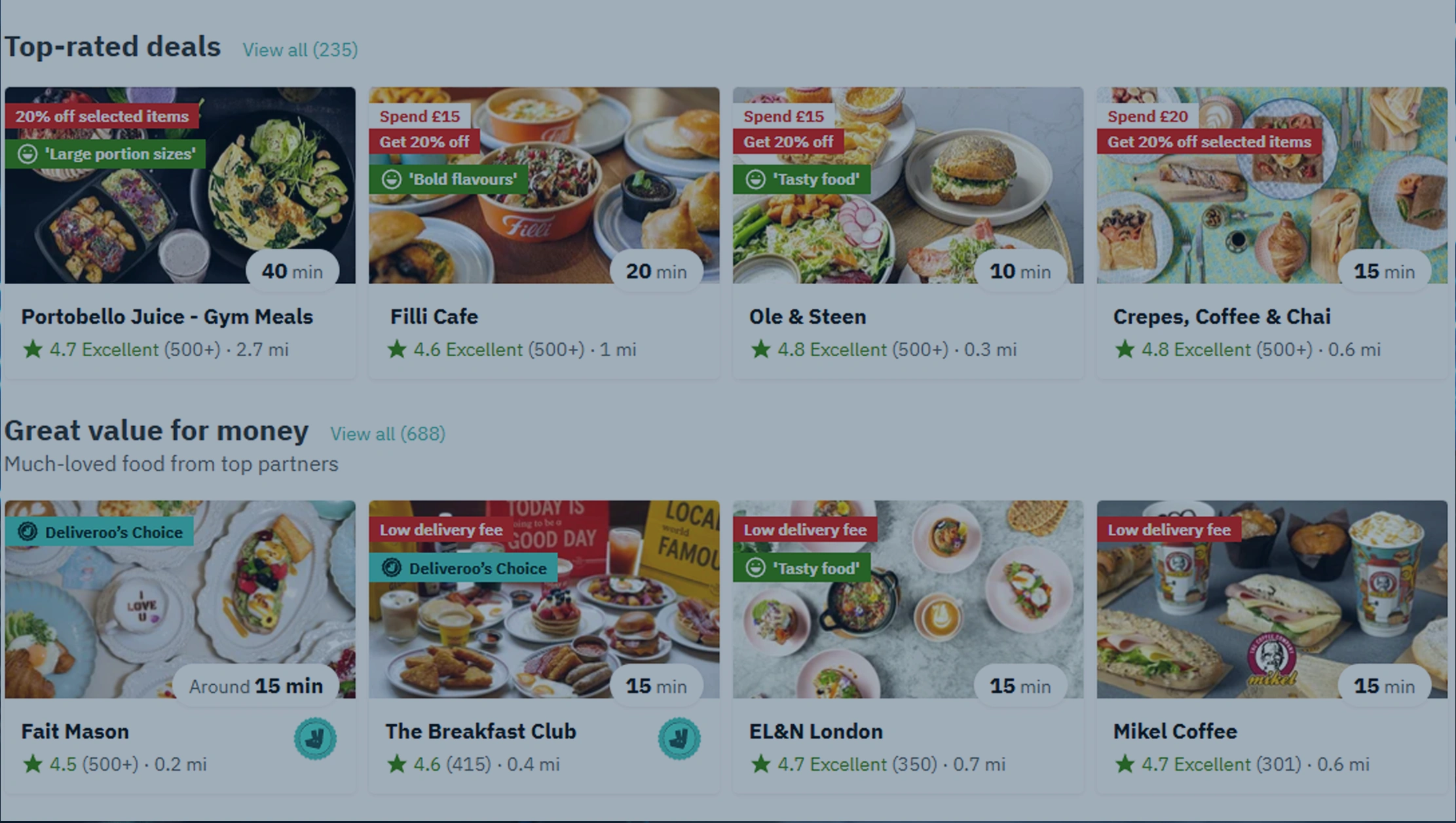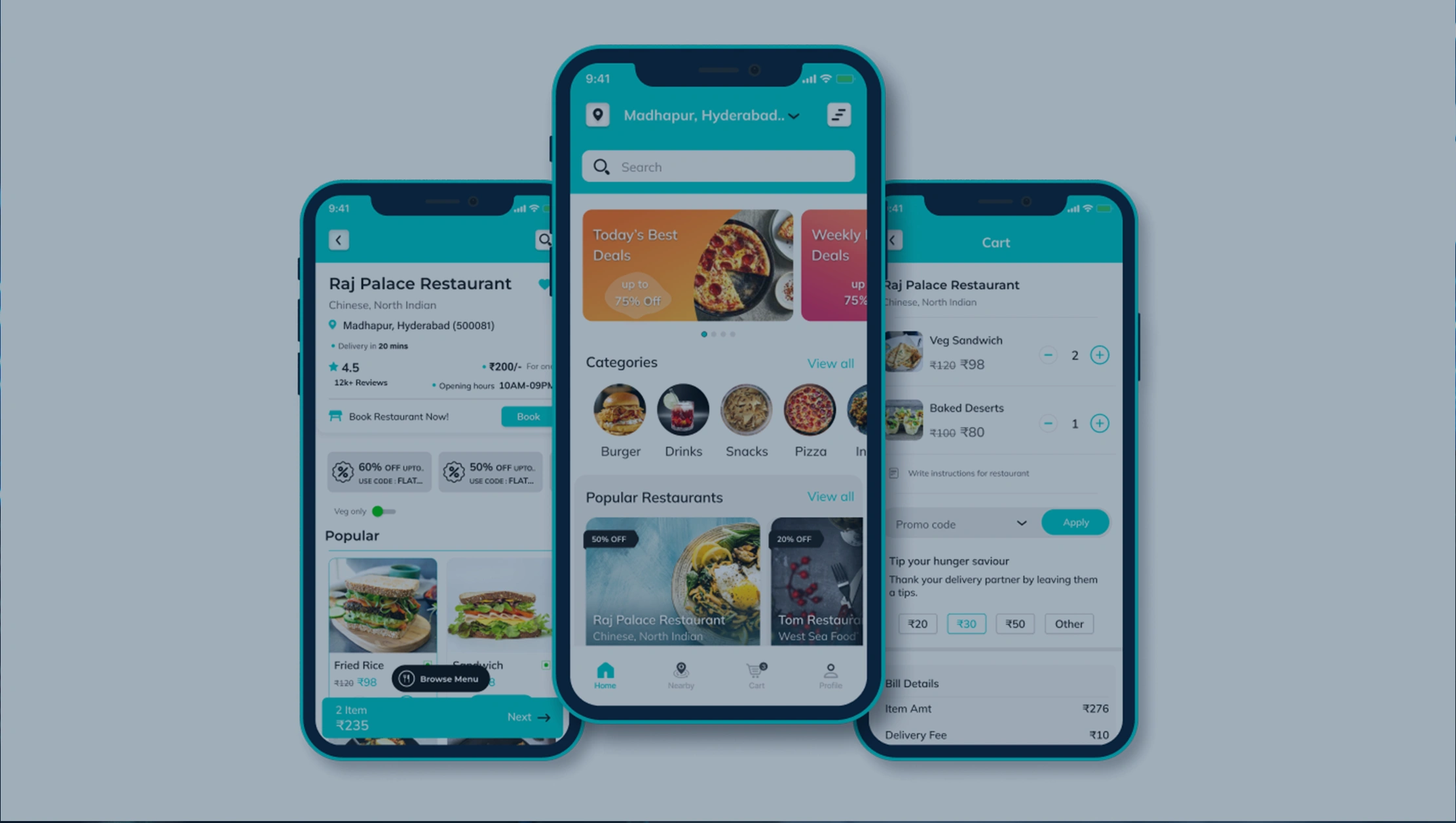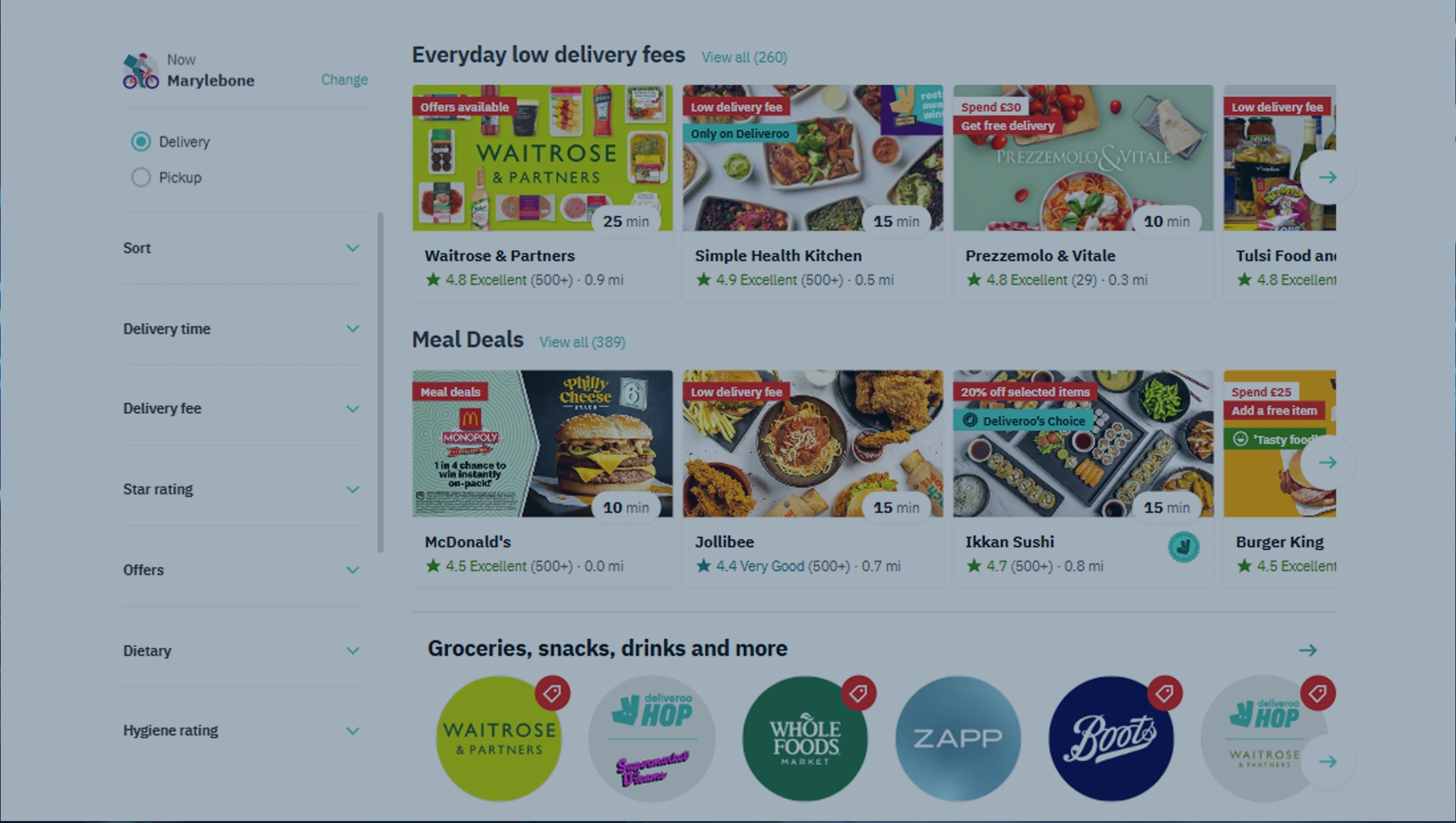Introduction
The food delivery industry has undergone a rapid transformation into a highly data-driven marketplace, where accurate insights into menus, prices, and delivery operations are essential for businesses to compete effectively. Deliveroo, one of the leading online food delivery platforms, hosts thousands of restaurants, each with its own unique menu options, pricing strategies, and delivery timelines. Analyzing this data manually is not only time-consuming but also nearly impossible at scale. This is where Deliveroo Menu Data Scraping comes into play, allowing businesses to automate the extraction of critical information for more intelligent decision-making.
By utilizing Food Delivery Data Scraping from Deliveroo, businesses can accurately track pricing patterns, delivery performance, and promotional campaigns. Restaurants can benchmark their menus against those of competitors, while aggregators identify gaps in offerings and customer preferences. Investors and analysts gain valuable insights into delivery trends, enabling them to forecast market growth and evaluate industry positioning more effectively.
Furthermore, Menu Scraping From Deliveroo Platform enables businesses to seamlessly track real-time menu changes, ensuring they stay aligned with evolving customer preferences and seasonal trends. By accessing precise food delivery data, organizations can refine pricing strategies, elevate customer satisfaction, and streamline operational processes.
Identifying Consumer Trends Through Menu Insights

Consumer decision-making in the food delivery market revolves around how menus are presented and updated on platforms like Deliveroo. With thousands of restaurants listed, analyzing food categories and trending cuisines requires structured data. Using Scraping Deliveroo Restaurant Menus, businesses can gain visibility into menu diversity, popular categories, portion sizes, and evolving preferences.
A Deloitte survey reveals that 56% of customers value menu variety as a key factor in their online ordering decisions. On Deliveroo, menu availability often shifts based on time of day, location, or promotional activities. Tracking these shifts enables businesses to gain a competitive advantage by anticipating demand more effectively. For example, breakfast-oriented items like smoothies may dominate morning orders, while burgers and pizzas peak during late evenings.
Sample Table: Top Menu Categories & Popularity Index
| Menu Category | Popularity | Growth YoY |
|---|---|---|
| Fast Food | 35% | +12% |
| Healthy Meals | 22% | +18% |
| Asian Cuisine | 19% | +15% |
| Desserts & Drinks | 14% | +8% |
| Premium Dining | 10% | +5% |
Such analysis empowers restaurants and food aggregators to strategically align their offerings with evolving customer preferences, ensuring that the right items are introduced at the most opportune time. By Scraping Deliveroo Product Price, businesses gain deeper visibility into pricing patterns and menu structures, helping them refine marketing campaigns, design targeted promotions, and boost customer loyalty.
Evaluating Competitor Pricing With Detailed Benchmarks

Pricing has a significant impact on customer loyalty and order frequency on delivery platforms. By using Extract Deliveroo Pricing Data, businesses can establish benchmarks against competitors and identify price gaps. Restaurants with transparent and affordable pricing typically gain higher traction among consumers.
According to Statista, 62% of customers rate affordability as their most important factor when selecting an online order. With real-time monitoring of competitor pricing, businesses can adjust their strategies, create targeted promotional offers, and prevent customer churn. For instance, a slight reduction in burger prices during peak hours could dramatically increase order volume.
Sample Table: Average Meal Prices by Cuisine on Deliveroo
| Cuisine Type | Avg. Price ($) | Competitor Avg. ($) |
|---|---|---|
| Pizza | 12.50 | 11.80 |
| Burgers | 9.20 | 8.90 |
| Asian Cuisine | 14.00 | 13.60 |
| Healthy Bowls | 10.80 | 10.20 |
| Premium Dining | 25.50 | 24.90 |
Through precise benchmarking, restaurants can make informed decisions about whether to compete through pricing strategies, highlight premium-quality offerings, or emphasize unique niche menu items. By integrating Web Scraping Deliveroo Data, businesses gain deeper insights into how promotions and menu strategies align with evolving consumer expectations. Continuous monitoring of these benchmarks enables restaurants to maintain profitability while also optimizing order volumes and ensuring competitive positioning in the dynamic food delivery market.
Analyzing Delivery Timelines To Improve Customer Retention

Delivery efficiency is directly linked to customer satisfaction and retention. With Deliveroo Delivery Data Analysis, brands can track average delivery times, evaluate performance by region, and pinpoint logistics bottlenecks.
McKinsey reports that 60% of food delivery customers expect their orders in under 30 minutes. However, delivery times often fluctuate due to factors such as traffic, the speed of restaurant preparation, and courier availability. Structured data enables businesses to measure these delays and implement corrective actions.
Sample Table: Average Delivery Time Analysis
| Region | Avg. Delivery Time (mins) | Industry Benchmark (mins) |
|---|---|---|
| Central London | 32 | 28 |
| Manchester | 29 | 27 |
| Birmingham | 31 | 29 |
| Glasgow | 34 | 30 |
By identifying regions with longer delivery timelines, businesses can refine courier partnerships or enhance restaurant preparation workflows. Using predictive analytics, they can forecast high-demand slots and optimize resources effectively. With Deliveroo Food Menu Scraping Services, brands gain valuable insights that support faster and more effective delivery strategies. Shorter delivery times not only strengthen customer loyalty but also improve ratings, directly influencing Deliveroo’s visibility algorithms.
Tracking Dynamic Food Prices Across Peak Periods
Food delivery platforms often adjust menu prices in response to time, demand, and promotions. Through Deliveroo Food Price Tracking, businesses gain insights into these shifts and can adjust their strategies accordingly.
Dynamic pricing is becoming increasingly common, with studies showing revenue increases of 8–12% for platforms that apply such models. Deliveroo, for example, raises prices during peak demand hours, such as lunch breaks or weekend evenings. Understanding these fluctuations enables restaurants to make data-driven adjustments and stay competitive.
Sample Table: Peak Hour Pricing Variations
| Meal Type | Base Price ($) | Peak Hour Price ($) | Increase (%) |
|---|---|---|---|
| Pizza | 12.00 | 13.50 | 12.5% |
| Burger | 9.00 | 10.20 | 13.3% |
| Noodles | 11.50 | 12.90 | 12.1% |
| Salad Bowl | 10.00 | 11.30 | 13.0% |
Tracking these shifts helps restaurants avoid being underpriced while identifying opportunities for combo deals or loyalty-based discounts. For analytics firms, Scrape Deliveroo Restaurant Data is essential for capturing fluctuations that reveal future pricing models and customer buying behavior.
Building Comprehensive Restaurant Datasets For Expansion

Expansion strategies depend heavily on understanding competitive landscapes. With Deliveroo Restaurant Dataset Extraction, businesses can collect structured datasets covering cuisines, ratings, reviews, and price structures.
For example, restaurants entering new markets need insights into regional food preferences and pricing trends. Deliveroo’s platform provides a wealth of information that, when extracted systematically, helps businesses identify growth opportunities while minimizing risks.
Sample Table: Example Restaurant Dataset Structure
| Restaurant Name | Cuisine Type | Avg. Rating | Avg. Price ($) | Location |
|---|---|---|---|---|
| Pizza Palace | Fast Food | 4.5 | 11.50 | London |
| Healthy Bites | Healthy Meals | 4.2 | 10.80 | Manchester |
| Spice Kitchen | Asian Cuisine | 4.3 | 13.90 | Birmingham |
| Sweet Delights | Dessert | 4.6 | 8.70 | Glasgow |
Such structured datasets can also be used to forecast customer demand patterns, spot underperforming areas, and evaluate competitors’ strengths. By leveraging this data, businesses make informed decisions about where and how to expand, improving the likelihood of sustainable growth.
Capturing Real-Time Insights For Market Advantage

In today’s fast-paced industry, real-time data has become crucial for making informed decisions. With Extract Real-Time Product Pricing, businesses can monitor delivery charges, menu adjustments, and promotional activities in real-time.
PwC reports that 70% of companies using real-time analytics experience faster decision-making and improved profitability. By tracking current promotions, seasonal offers, and surge pricing, businesses can adjust their strategies quickly to remain competitive.
Sample Table: Real-Time Promotional Offers on Deliveroo
| Restaurant Name | Offer Type | Discount (%) | Duration |
|---|---|---|---|
| Pizza Palace | Buy 1 Get 1 Free | 50% | 2 Hours |
| Noodle House | Lunch Discount | 20% | 12–3 PM |
| Burger Hub | Weekend Combo Deal | 25% | 48 Hours |
This information helps restaurants fine-tune marketing strategies, run targeted promotions, and increase order frequency. Analysts can also use real-time datasets to identify market trends before competitors react. With structured real-time insights, businesses not only respond to the present but also prepare for future opportunities in the food delivery market.
How Web Fusion Data Can Help You?
We specialize in Deliveroo Menu Data Scraping, ensuring businesses gain accurate, structured, and real-time information to optimize their strategies. Our advanced scraping methods provide businesses with detailed insights into menus, prices, and delivery performance metrics.
We deliver high-quality data extraction services that empower restaurants, aggregators, and research firms with actionable intelligence. With our solutions, you can:
- Track competitor menus and offerings.
- Monitor delivery times and service quality.
- Benchmark pricing across multiple cuisines.
- Build structured datasets for expansion strategies.
- Evaluate consumer demand patterns.
- Identify promotional and seasonal opportunities.
By integrating our solutions, businesses can stay ahead in a competitive market with reliable and scalable scraping capabilities, including Web Scraping Deliveroo Data for real-time monitoring and decision-making.
Conclusion
The food delivery market thrives on speed, accuracy, and strategic insights. With Deliveroo Menu Data Scraping, businesses can gain insights into menus, pricing strategies, and delivery performance, all while staying competitive in a rapidly evolving market. By analyzing these insights, companies can adapt to consumer preferences and make informed decisions that support growth.
Furthermore, structured analytics powered by Scrape Deliveroo Restaurant Data allows businesses to predict market shifts and remain relevant in customer-centric environments. From pricing models to delivery efficiency, every data point matters when building long-term success in the food delivery industry. Contact Web Fusion Data today to start extracting the insights you need to dominate the food delivery market.

